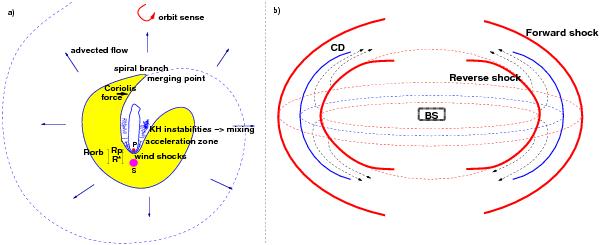Fig. 1

a) Sketch of the pulsar high-mass binary scenario on scales larger than the binary system. The star (S) and pulsar (P) shocked winds trace a spiral-shape due to the Coriolis force and the pulsar orbital motion. Eventually, both shocked winds mix due to Kelvin-Helmholtz instabilities, and the spiral arms merge. b) Cartoon of the bubble (case η < 1) driven by the shocked flows formed within the binary system (BS) and made of pulsar- and stellar-wind material. The bubble expands and accelerates, eventually terminating in a shock where its ram pressure is equal to the pressure of the SNR or the shocked ISM for old enough sources. This occurs at the contact discontinuity (CD).
Current usage metrics show cumulative count of Article Views (full-text article views including HTML views, PDF and ePub downloads, according to the available data) and Abstracts Views on Vision4Press platform.
Data correspond to usage on the plateform after 2015. The current usage metrics is available 48-96 hours after online publication and is updated daily on week days.
Initial download of the metrics may take a while.


